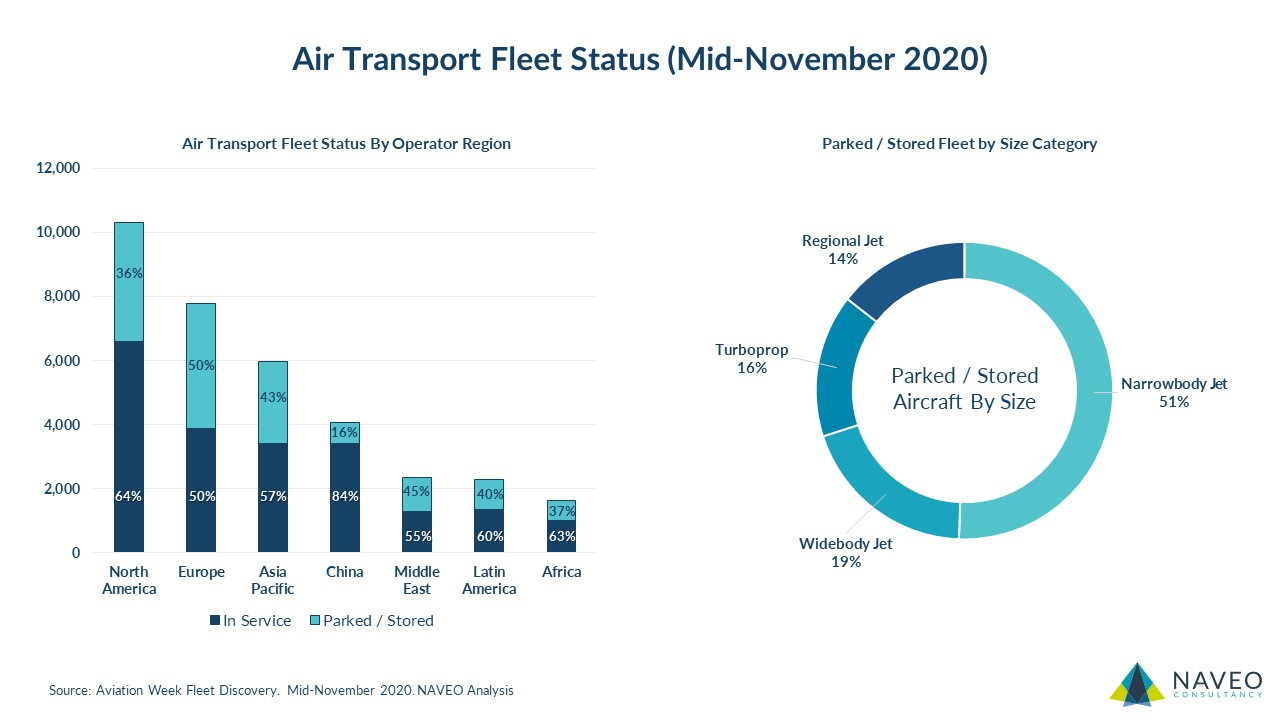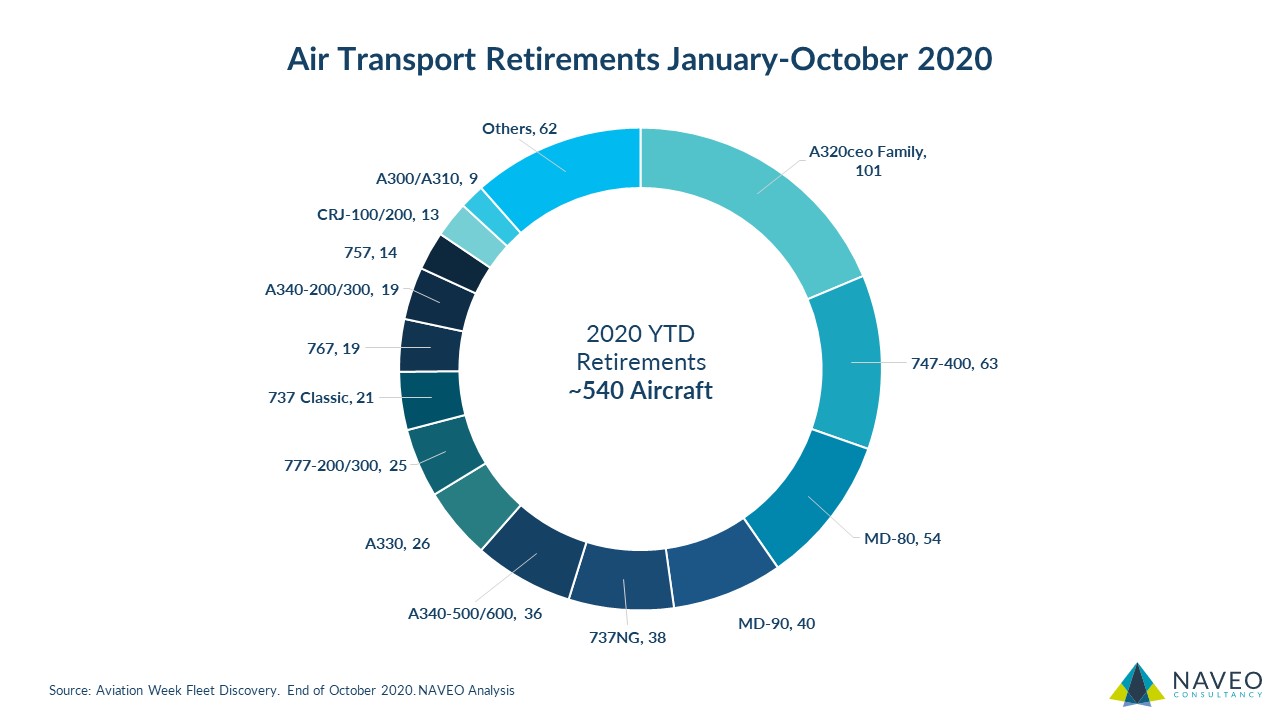Let’s take a look at the air transport fleet’s current active and stored/parked status. As we reach mid-November, ~61% of the fleet is in service, and 39% parked. The regional situation continues to diverge. COVID fatigue in the US has helped domestic travel recover, and ~64% of the fleet is active. The bright light continues to be China, where domestic travel has staged a remarkable recovery resulting in ~84% of the fleet in service. Many European countries are in a renewed lockdown, and consequently, the European fleet has the worst active fleet % of any region (only ~50% active). Remember, even if the aircraft are active, they are often flying reduced hours/cycles, and load factors are still lower.
Looking at just the parked/stored fleet in terms of the aircraft size, ~51% of stored aircraft are narrowbodies with widebodies making up 19%, Turboprops, and RJs the remaining 30%.
Moving forward to the rest of the year, we should closely watch Thanksgiving and the Christmas travel period. It’s typically a busy time for passengers and Air Cargo. However, with COVID cases rising in the US, how much of a dent this will have on Thanksgiving travel remains to be seen.

